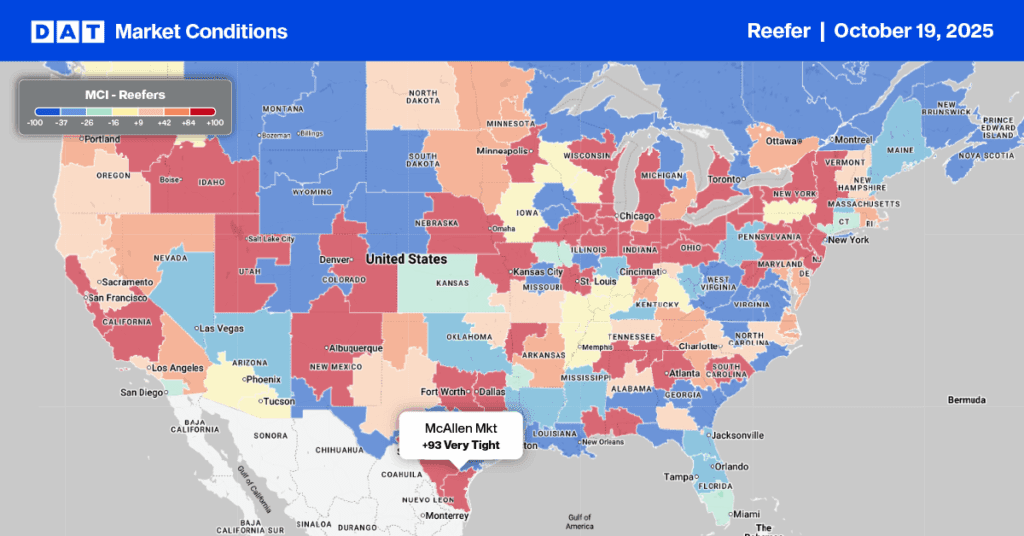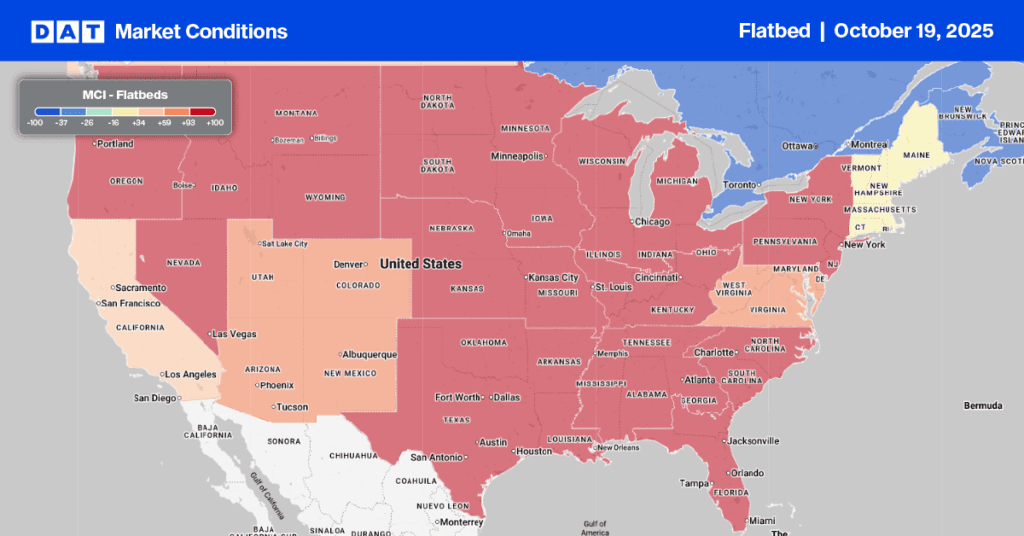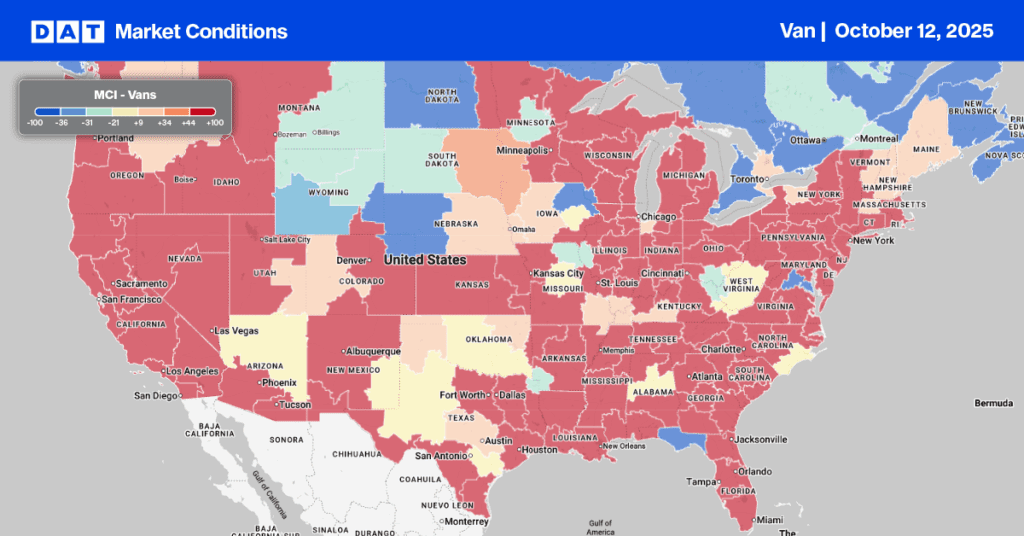Thousands lined the streets of Morton, IL, for the annual Pumpkin Festival parade a few weeks ago. The small village is the self-proclaimed “Pumpkin Capital of the World,” where 85% of the globe’s canned pumpkin is packaged. Morton is located in the Bloomington freight market, 150 miles west of downtown Chicago.
Early Halloween shopping is on the rise, with 47% of survey participants beginning their shopping before October, according to the National Retail Federation’s annual survey conducted by Prosper Insights & Analytics. The figure is up from 37% five years ago and compares with just 32% in 2014. Total Halloween spending is expected to reach $11.6 billion after last year’s record-setting $12.2 billion.
Watch DAT iQ Market Update every Tuesday at 10 am ET
Nearly half of Halloween consumers shopped early this year
According to the National Retail Federation (NRF), 72% of consumers plan to celebrate Halloween this year, consistent with last year’s record of 73%. Top holiday activities include handing out candy (67%), decorating their home or yard (52%), dressing up in costume (49%), carving a pumpkin (43%), and throwing or attending a party (29%). Those taking part in the spooky season plan to spend an average of $103.63, about $4.62 less than last year’s record of $108.24.
Across freight categories, candy remains the most popular, with total spending expected to reach $3.5 billion. Total spending on decorations is expected to hit $3.8 billion, followed by costumes ($3.8 billion) and greeting cards ($0.5 billion).
The Fall holidays of Halloween and Thanksgiving signal that pumpkins are time to be harvested, creating more demand for reefer carriers. More miniature pumpkins are already on farm stands around the country. Pumpkins are used to make soups, desserts, and breads, and many Americans include pumpkin pie in their Thanksgiving meals.
What’s lesser known is the history of pumpkins in the carving of jack-o’-anterns displayed at homes nationwide.
History of the jack-o-lantern
The term “jack-o’-lantern” has been used to describe a lantern made from a hollowed-out pumpkin since the 19th century, but the term originated in 17th-century Britain, where it was used to refer to a man with a lantern or to a night watchman. At that time, unknown men were called Jack. Thus, an unknown man carrying a lantern was sometimes called “Jack with the lantern” or “Jack of the lantern.”
In Ireland and Scotland, Jack’s lanterns began with carving scary faces into turnips or potatoes and placing them into windows or near doors to frighten away evil spirits. Immigrants from these countries brought the jack-o’-lantern tradition to the United States and soon found that pumpkins were much easier to carve.


